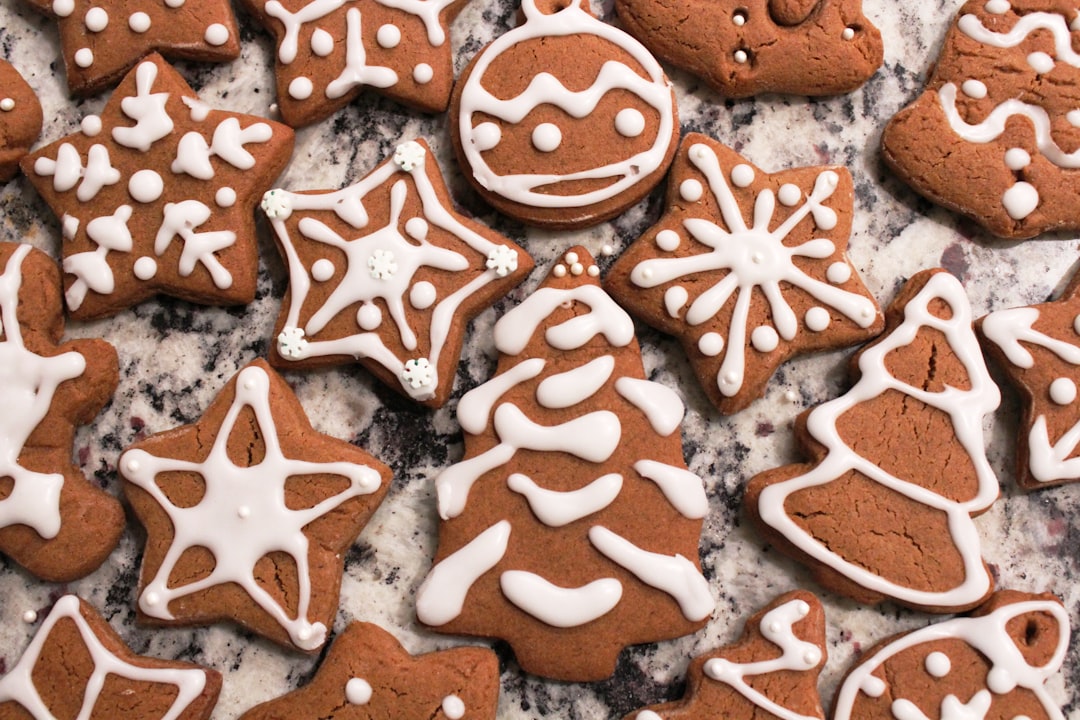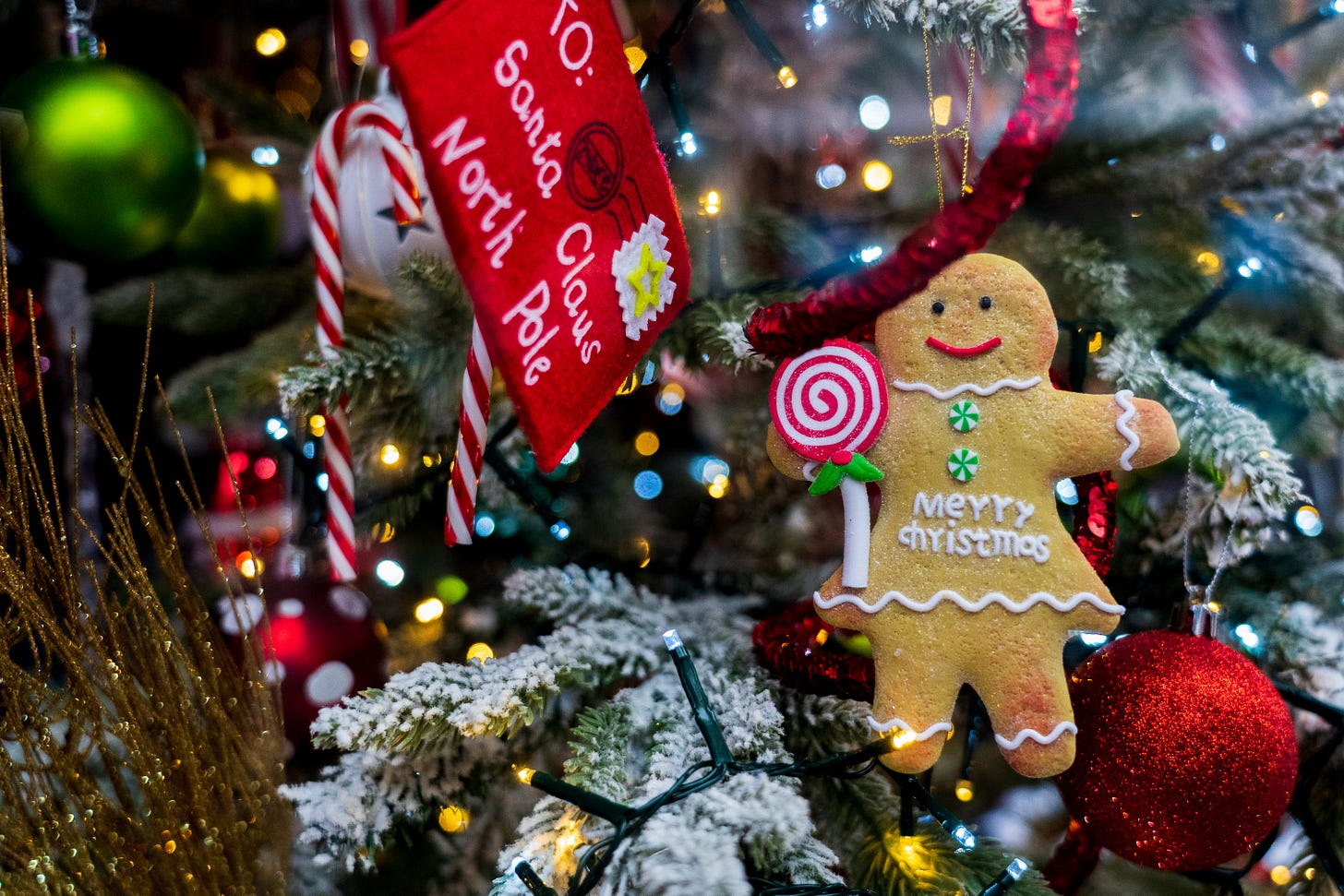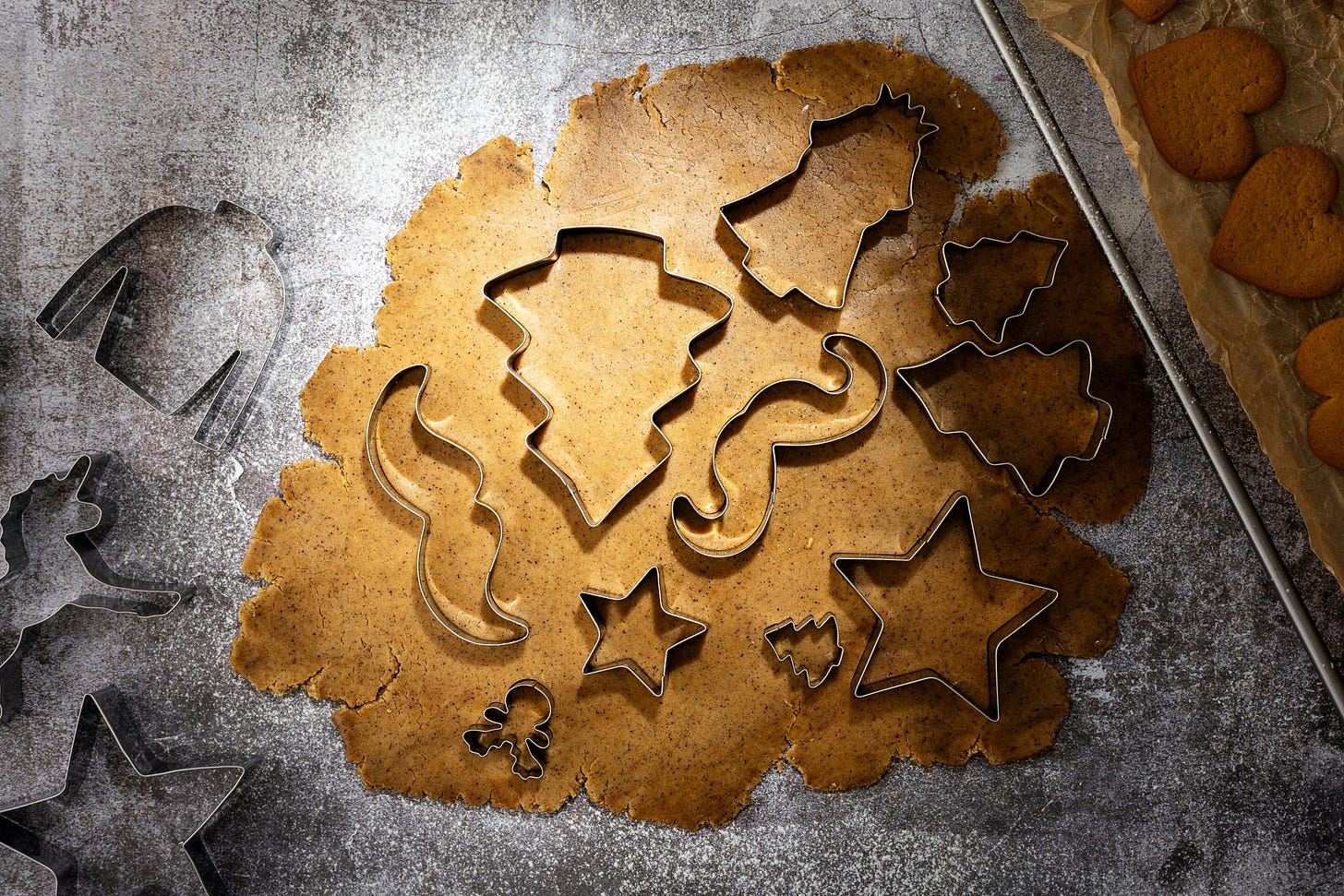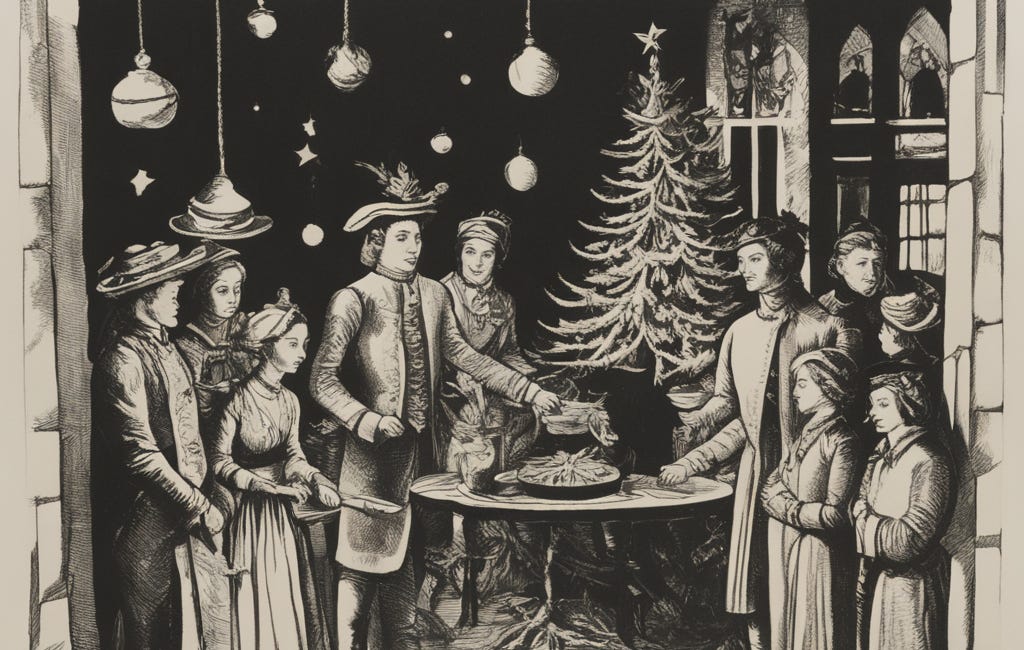The Great American Christmas Cookie
which cookies would Chefs Edna, Julia, Clementine, and Irma leave for Santa?
This article is part of the Table Talk series, where we discuss everything from kitchen innovations to what’s on the shelves of your pantry. If it’s related to food, it’s on the table.

Cookies and Milk for Santa
One of the moments that I anticipated the most every Christmas morning was racing to the fireplace to see if Santa liked the cookies I’d left the night before. After all, it was quite a ceremony to pick out the very best decorated cookies and to arrange them just so in an enticing manner, along with the requisite glass of milk. In the morning, I’d study the crumbs in hoping of discovering which shape or color of frosting was preferred.
Santa’s cookies varied over the years. Sugar cookies were exclusively a holiday bake, but it was also likely that chocolate chip, peanut butter, or shortbread might be on offer. Sometimes, my mom suggested that Santa might want an apple and a glass of water, but I knew that Santa wanted something homemade and delicious - a gift from me as a thank-you for the gifts he delivered.

A Tasty Tradition Grows
As a young child, I don’t remember questioning why we left cookies and milk, I just assumed that he grew hungry during his long nocturnal journey and liked having a snack to tide him over. Eventually, my curiosity grew.
There are several theories of how humans developed a tradition of leaving sweet snacks for Santa; here are some of my favorites:
Saint Nicholas and the Gift of Goodness: The origins of leaving treats for Santa could be traced to the traditional feast of Saint Nicholas on December 6th when children would leave food and drink for the benevolent saint and his attendants, hoping to exchange these offerings for gifts overnight.
The Edible Christmas Tree: Another connection emerges from Germany, where the people decorated "paradise trees" with apples, wafers, and cookies during the Christmas season, eventually evolving into the modern Christmas tree. The visiting Santa would often indulge in the delicious decorations. Over time, the ornaments on Christmas trees transformed, but the charming notion of leaving treats for Santa endured.

Norse Mythology and Yuletide Offerings: Digging deeper, we can find a link to Norse mythology. In ancient times, people would leave hay and treats for Odin's eight-legged horse, Sleipner, in the hopes that the god would visit their homes during his Yuletide hunting adventures. This age-old tradition was passed down to Dutch children, who continued the practice by leaving treats for Father Christmas' horse, as well as leaving snacks for Santa himself.
A Sweet Gesture During Hard Times: The Great Depression cast a shadow over many households, but a heartwarming tradition emerged during these challenging times. It is believed that parents, wanting to instill the value of sharing in their children, encouraged the practice of leaving snacks for Santa Claus and his reindeer. This act of kindness, born out of difficult circumstances, became a symbol of generosity and hope during a period of economic hardship.
The Chef’s Cookie
While I have no evidence that Chef Edna Lewis, Julia Child, Clementine Paddleford, or Irma Rombauer had particular holiday cookie favorites, I had fun imagining which cookies might be their favorites. See if you agree -
Edna Lewis and Hickory Nut Cookies: In the Taste of Country Cooking, Chef Edna writes lovingly about her family’s efforts to prepare for Christmas at home and in her childhood community of Freetown. Her descriptions of chopping fruits and nuts to prepare fruitcakes, pies, and cakes that graced the family table. She recalls gathering wild hickory nuts from the ground before the local squirrels could steal the nuts away. It was a dilemma, she recalled, after the painstaking work of cracking the tough shells and picking out the meat whether to eat them or save them for special dishes.
Julia Child and Sugar Cookies: Although filled with recipes for elegant tarts, soufflés, mousses, and more, Mastering the Art of French Cooking is remarkably silent on “cookies,” except for the inclusion of a recipe for Galette Sablées, or “Sugar Cookies,” utilizing leftover Pâte Brisée Sucrée (sweet short paste) or Pâte Sablée (sugar crust) dough. Although the recipe is brief and precise, I can imagine her appreciating the glorious economy of creating a simple cookie from scrap pastry.

Clementine Paddleford and Eighteenth Century Ginger Cookies: Clementine Paddleford’s How America Eats chronicles the foodstuffs that grace tables across the United States, and Christmas feasts are no exception. Although she devotes several essays to her holiday repasts, her visit to Williamsburg, Virginia, and the “Eighteenth Century Ginger Cookie” squeaks out ahead of the rest. After all, Williamsburg has claim to the home where the first lighted Christmas tree was displayed in 1842 at the home of George Tucker. Her cookie recipe is full of spicy ginger, nutmeg, and cinnamon with dark molasses, the quintessential holiday treat.
Irma Rombauer and Peanut Butter Cookies: My 2019 version of The Joy of Cooking has dozens of recipes for cookies, including specific recommendations for 11 recipes specifically for delightful Christmas cookies, but I think that Irma Rombauer, author of the original 1931 Joy would be partial to the Peanut Butter Cookie recipe that has been a consistent favorite since 1936. With a classic crossed fork pressing technique, they are a great cookie all year round.
Turn the Page…
Egg Nogging (with Recipe!)
This article is part of the Dish-Covery series, where we uncover the stories behind your beloved flavors. Pulling back the curtain to look at culinary traditions that shape our modern palates. From Medieval Possets to Modern Eggnog While may we think of a seasonal glass of eggnog as an “Olde Tyme” Christmas drink, the reality is that the creamy, rich, egg-laden concoction is essentially an innovation on an older festive drink of British origins - the posset - that was drunk at weddings rather than strictly as a holiday drink. The story of how eggnog came to be… well, nog… is as American as apple pie.
Reclaiming Fruit Cake - Thelma's Fruit Cake Recipe
This article is part of the Recipe Box Roulette series, an innovative "card game" crafted to pay homage to the curators of long-forgotten or overlooked recipe boxes and breathe new life into their treasured dishes. Generosity, Kindness, and Connection
Let’s Stay Connected
Follow us on Instagram @asweeat,
Join our Family Recipes, Traditions, and Food Lore community on Facebook
Subscribe to the As We Eat Journal
Listen to the As We Eat Podcast
Do you have a great idea 💡 for a show topic, a recipe 🥘 that you want to share, or just say “hi”👋🏻? Send us an email at connect@asweeat.com
Looking for a unique gift idea for a birthday, anniversary, holiday, host or hostess, or just because? Consider giving a subscription to the As We Eat Journal.


















